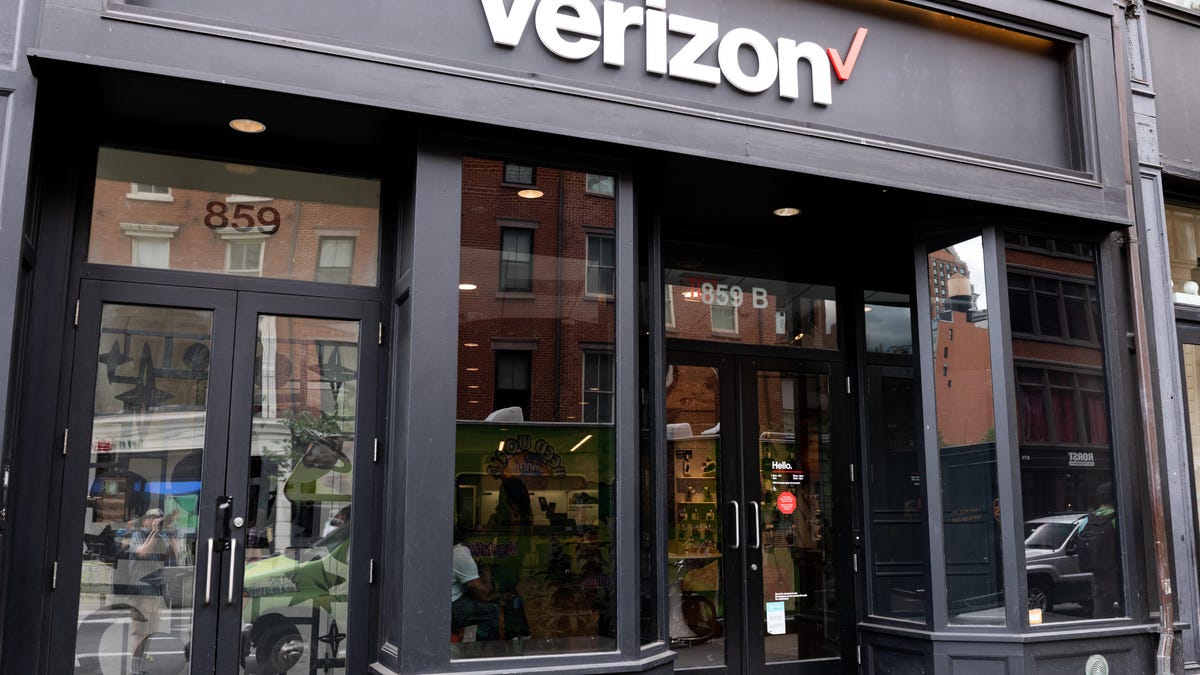Verizon says its 'Ultra Wideband 5G' will be better than the rest
Verizon touts its use of millimeter frequency spectrum as a major differentiator that sets its 5G service apart from its rivals' networks.

Verizon store in Union Square in New York City.
Verizon says its "5G Ultra Wideband" service, which uses super high-frequency wireless spectrum, will give it an edge over competitors.
In a blog post Tuesday, Kyle Malady, the company's CTO, made the case for why the company's 5G network is different from all the rest.
"There's 5G, then there's Verizon 5G Ultra Wideband," Malady writes.
Specifically, he outlined three major elements or assets the company has that he says make its network superior to its competitors' networks: millimeter wave spectrum, an end-to-end fiber network and small cells.
"The truth is, 5G is only as good as the network it runs on," he continued. "And Verizon is the only company that brings all three pieces together for its customers through our 5G Ultra Wideband solutions."
Verizon and the rest of the major wireless carriers in the US are racing to deploy 5G, which promises a huge leap in speed and responsiveness. 5G is seen as the foundation of other technology, such as self-driving cars and telemedicine, and there's been ceaseless hype over the last couple of years.
Verizon announced separately on Tuesday that its 5G broadband replacement service is set to launch in October in Houston, Indianapolis, Los Angeles and Sacramento, California. The company let it slip earlier this year when it announced upcoming 5G attachment to its new Moto Z3 that it plans to launch its mobile 5G network earlier next year.
Meanwhile, competitors such as AT&T say they'll launch the first mobile 5G network by the end of this year, but it's not clear how widespread the service will be available. T-Mobile promises to have broader commercial service available early next year, and Sprint and LG are promising the first 5G smartphone. T-Mobile has committed to building a nationwide 5G network by 2020.
Even though its unclear which carrier will be first to make mobile 5G available on a widescale, Verizon is trying to make the case that its mix of spectrum, fiber and small cell technology will give it the edge both in terms of coverage and performance over its competitors. Now it's touting its use of millimeter-wave spectrum, which transmits signals at very high frequency between 30 gigahertz (Ghz) and 300 Ghz. This high frequency spectrum offers loads of network capacity and very high speed transmission. And this spectrum is considered the cornerstone of true 5G technology that will allow things like self driving cars, remote surgery and other applications that need high performance and low latency networks.
Earlier this year, the Federal Communications Commission announced it will start auctioning off this prime 5G spectrum. But Verizon has already made a concerted effort to get a jump on acquiring this very high-frequency spectrum. Last year, it beat out rival AT&T to purchase Straight Path in a deal aimed at acquiring the company's millimeter spectrum holdings. It also bought XO Communications, which also had millimeter spectrum licenses.
"The point here is a company can't just decide they want to offer 5G and be ready in a few months. It takes years of deliberate planning, testing, and innovation," Maladay says in the blog post. "We believe our 5G Ultra Wideband network is the only network with the power to usher in the fourth industrial revolution."
Still, Verizon's claims that it's the only carrier to offer all three of these elements is a bit misleading. Its chief rival AT&T is also using millimeter frequency as a key part of its initial 5G deployment. The carrier also uses small cells and also has a substantial fiber network to draw upon.
On Monday, AT&T said it made the world's first wireless 5G data transfer over millimeter wave using standards-based, production equipment with a mobile form factor device outside of a lab. AT&T says it plans to use millimeter wave spectrum to deploy 5G in densely populated areas, where demand on the network is the highest. In other parts of the network, the company said it will deploy mid and low-band spectrum holdings.
"We've been encouraged by the performance of mmWave in our 5G trials and found that it performs better than expected and is successful in delivering ultra-high wireless speeds under a variety of conditions," the company said in a press release.
But Verizon's marketing may be aimed more directly at T-Mobile, which has focused its 5G talking points around using multiple bands of spectrum, from lower-frequency airwaves, for covering wider parts of the country. It has plans to also use millimeter-wave spectrum, but the company's executives have knocked AT&T and Verizon for focusing too much on millimeter-wave spectrum, which has the capacity for extremely high speeds but can't cover broad distances. The biggest drawback of millimeter frequency is that signals transmit over very short distances.
This isn't the first time that Verizon has tried to brand its network technology in an effort to differentiate itself from competitors. In 2014, the company began using the term "XLTE" to refer to its LTE network, which used AWS spectrum.
The Smartest Stuff: Innovators are thinking up new ways to make you, and the things around you, smarter.
Tech Enabled: CNET chronicles tech's role in providing new kinds of accessibility.

